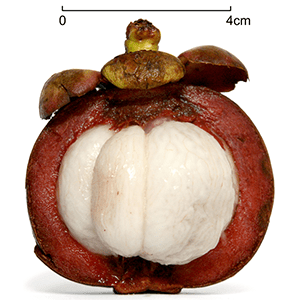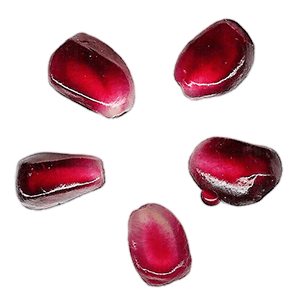A supertaster is a person who experiences the sense of taste with far greater intensity than average. Women are more likely to be supertasters, as are Asians and Africans. The cause of this heightened response is currently unknown, although it is thought to be, at least in part, due to an increased number of fungiform papillae (small mushroom-like structures on the tongue that house taste buds). Supertasters contrast with nontasters who have a decreased sense. The term originates with experimental psychologist Linda Bartoshuk who has spent much of her career studying genetic variation in taste perception.
In some environments, heightened taste response, particularly to bitterness, would represent an important advantage in avoiding potentially toxic plant alkaloids. However, in other environments, increased response to bitter may have limited the range of palatable foods. In a modern, energy-rich environment, supertasting may be cardioprotective, due to decreased liking and intake of fat.
Supertaster
Percussive Maintenance
Percussive maintenance, also known as percussion therapy or a technical tap, is a term used to describe the malediction of an ill-behaved device to make it work, that is to say, swear at it and hit it. The origins and practice of the term are unknown, although some suggest the act became commonplace with the introduction of vacuum tube electronics. The term is a play on ‘preventive maintenance.’
Desert Bus
Desert Bus a minigame found in the 1999 Sega CD title: ‘Penn & Teller’s Smoke and Mirrors.’ The objective of the game is to drive a bus from Tucson, Arizona to Las Vegas, Nevada in real time at a maximum speed of 45mph. The feat requires 8 hours of continuous play to complete, since the game cannot be paused. Penn Jillette commented in his radio show that the overly realistic nature of the game was in response to Janet Reno and the controversy surrounding violent video games at the time.
read more »
Leprosy Colony Money
Leprosy colony money was special money which circulated only in leprosy sanatoriums due to the fear that the leprosy bacteria would infect other people. Leprosy, however, is in fact not easily transmitted by casual contact, and such transmission as there is only happens through long term, constant and intimate contact with leprosy sufferers and not contact with everyday objects used by sufferers. The system of special colony money was used between 1901 and around 1955.
OK Soda
OK Soda was a soft drink created by Coca-Cola in 1993 that aggressively courted the Generation X demographic with unusual advertising tactics, including endorsements and even outright negative publicity. It did not sell well in select test markets and was officially declared out of production in 1995 before reaching nation-wide distribution.
The drink’s slogan was ‘Things are going to be OK.’ The project was cancelled by Coca-Cola just seven months after its kickoff, and the soft drink was never widely released to the public.
read more »
Prosperity Gospel
The prosperity gospel is a religious belief found among Christians, primarily in the United States, centered on the notion that God provides material prosperity for those he favors. It has been defined by the belief that ‘Jesus blesses believers with riches’ or more specifically as the teaching that ‘believers have a right to the blessings of health and wealth and that they can obtain these blessings through positive confessions of faith and the ‘sowing of seeds’ through the faithful payments of tithes and offerings.’
It is not a clearly defined denomination, but a strain of belief that runs through the Pentecostal Church and a number of mainstream evangelical churches, with varying degrees of intensity. It arose in the United States after World War II championed by Oral Roberts and became particularly popular in the decade of the 1990s.
Mangosteen
The purple mangosteen [mang-guh-steen] is a tropical evergreen tree believed to have originated in Indonesia. The rind (exocarp) of the edible fruit is deep reddish purple when ripe. Botanically an aril (like pomegranate fruit), the fragrant edible flesh can be described as sweet and tangy, citrusy with a flavour and texture similar to a peach. It is sometimes called the ‘Queen of Fruit,’ owing to an apocryphal legend of Queen Victoria offering a reward of 100 pounds sterling to anyone who could deliver to her a fresh mangosteen. An ultratropical tree, the mangosteen must be grown in consistently warm conditions, as exposure to temperatures below freezing for prolonged periods will generally kill a mature plant. Experienced horticulturists have grown this species outdoors, and brought them to fruit in extreme South Florida.
Due to restrictions on imports, mangosteen is not readily available in certain countries. Although available in Australia, for example, they are still rare in the produce sections of grocery stores in North America and Europe. Beginning in 2007 for the first time, fresh mangosteens were sold from specialty produce stores in New York City for as high as $45 per pound, but wider availability and lower prices have become common in the United States and Canada. Before ripening, the mangosteen shell is fibrous and firm, but becomes soft and easy to pry open when the fruit ripens.
Aril
An aril [ar-il] is any specialized outgrowth from the funiculus (attachment point of the seed) or that covers or is attached to the seed. It is sometimes applied to any appendage or thickening of the seed coat in flowering plants, such as the edible parts of the mangosteen and pomegranate fruit, the mace of the nutmeg seed, or the hairs of a cotton plant. The aril may create a fruit-like structure (called a false-fruit). The edible flesh of the longan, lychee, ackee and lleuque fruits are highly developed arils surrounding the seed.
Lithography
Lithography is a method for printing using a stone or metal plate with a completely smooth surface. It was invented in 1796 by Bavarian author Alois Senefelder as a low-cost method of publishing theatrical works. His method used an image drawn in wax or other oily substance applied to a stone plate as the medium to transfer ink to the paper. In modern times, the image is often made of polymer applied to a flexible aluminum plate. The flat surface of the plate or stone is slightly roughened, or etched, and divided into hydrophilic (water-loving) regions that accept a film of water and repel the greasy ink, and hydrophobic regions which repel water and accept ink. This process is different from gravure or intaglio printing where a plate is engraved, etched or stippled to make cavities to contain the printing ink, or woodblock printing and letterpress where ink is applied to the raised surfaces of letters or images.
In the early days of lithography, a smooth piece of limestone was used. After the oil-based image was put on the surface, a solution of gum arabic in water was applied, the gum sticking only to the non-oily surface. During printing, water adhered to the gum arabic surfaces and avoided the oily parts, while the oily ink used for printing did the opposite. Chromolithography (color lithography) was invented in 1837; by using more than one stone, different colors can be added to the same picture. Each color needs a separate stone. The great posters of such artists as Alphonse Mucha and Toulouse-Lautrec are made like this. Complicated graphics may need twenty or more stones.
Pin-Up Girl
A pin-up girl is a model whose mass-produced pictures see wide appeal as popular culture. Pin-ups are intended for informal display, e.g. meant to be ‘pinned-up’ on a wall. Pin-up girls may be glamour models, fashion models, or actresses. The term pin-up may also refer to drawings, paintings, and other illustrations done in emulation of these photos.
The term was first attested to in English in 1941; however, the practice is documented back at least to the 1890s. The pin-up images could be cut out of magazines or newspapers, or be from postcard or chromo-lithographs, and so on. Such photos often appear on calendars, which are meant to be pinned up anyway. Pin-ups are also referred to as ‘cheesecakes’ the male counterpart being ‘beefcake.’
read more »













